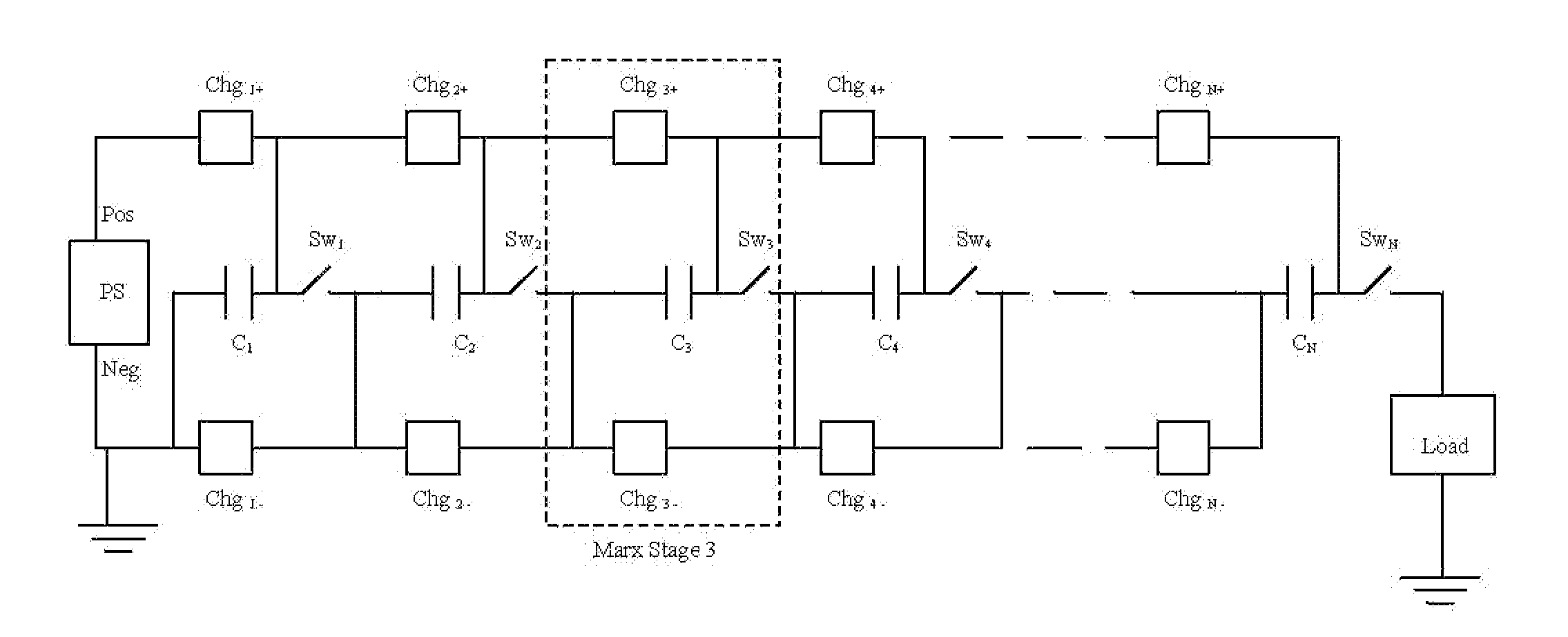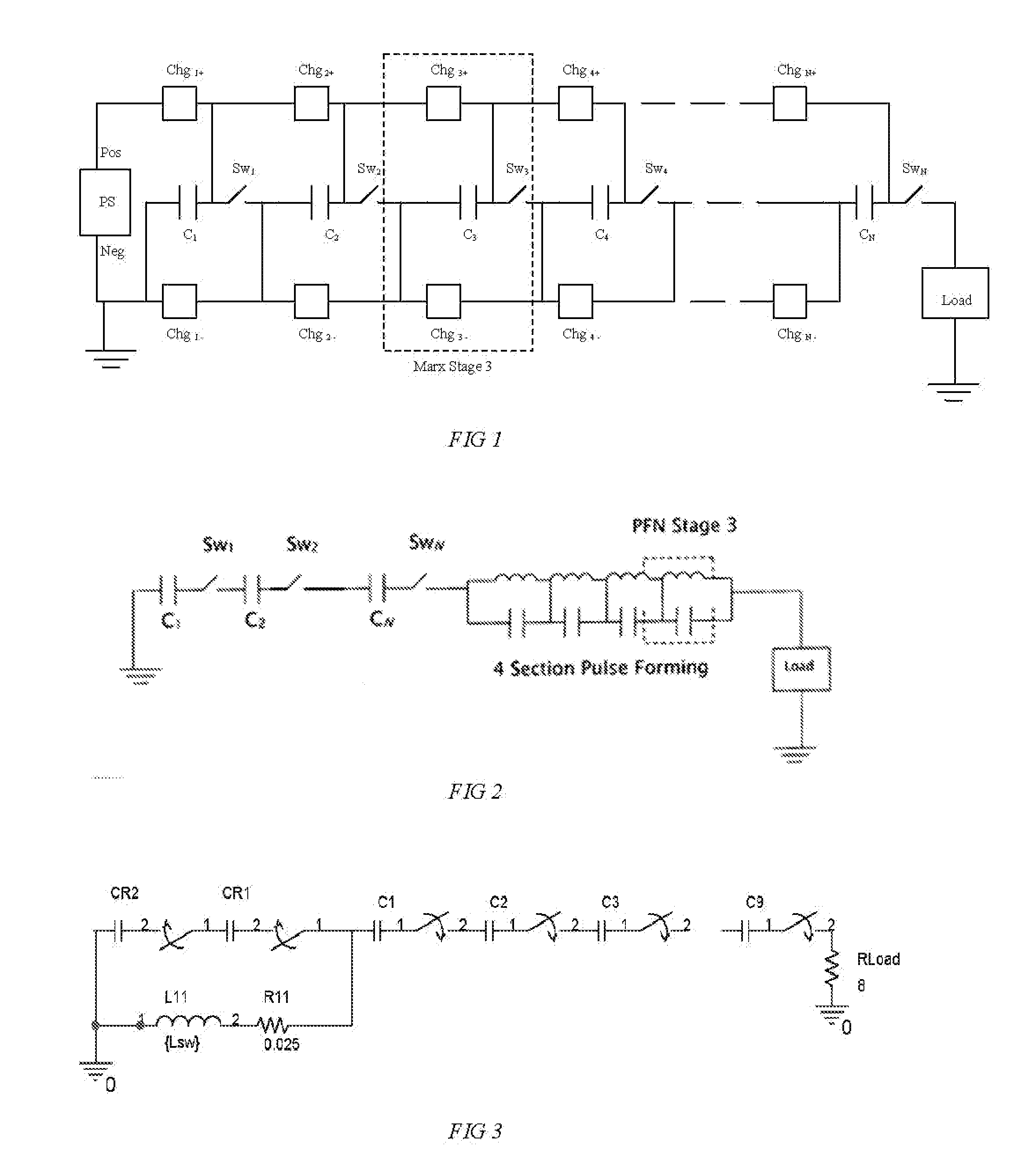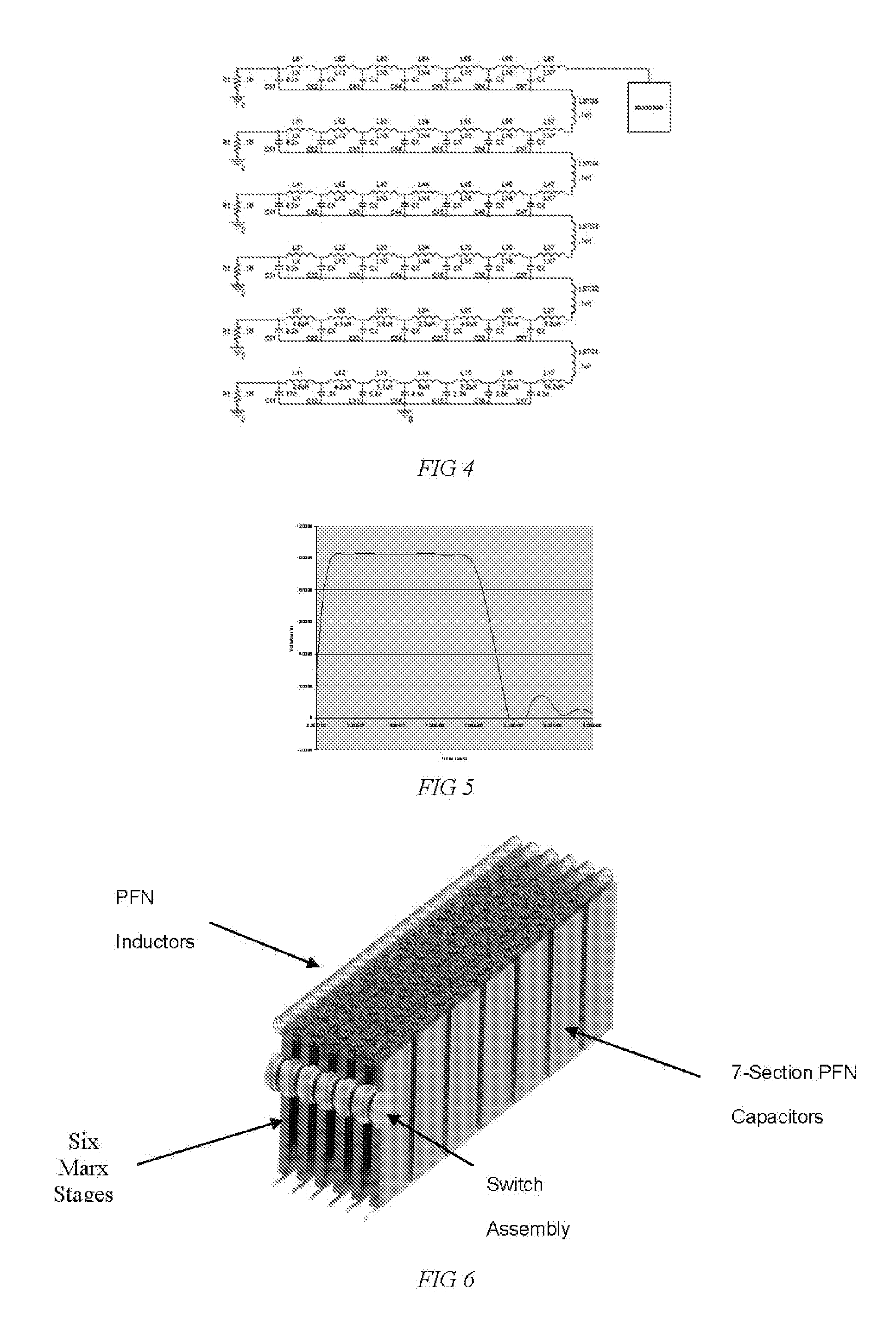Photon Initiated Marxed Modulators
a marx generator and modulator technology, applied in pulse train generators, pulse techniques, instruments, etc., can solve the problems of long life operation, inability to meet the needs of reliable, marx generators producing double exponential pulse shapes that are not acceptable for many applications, and limiting system reliability, repetition rate, and lifetime between maintenance. , to achieve the effect of high repetition rate, high voltage and long li
- Summary
- Abstract
- Description
- Claims
- Application Information
AI Technical Summary
Benefits of technology
Problems solved by technology
Method used
Image
Examples
example 1
[0040]The accelerating cavities for linear accelerators are frequently powered by radio frequency electromagnetic pulses that are produced by klystrons. This invention can satisfy the requirements of such klystrons: for example, a Photon Initiated Marxed-PFN pulse generator can produce low ripple 500 kV, 530 A, 1.6 microsecond flattop pulses with rise and fall times of less than 300 nanoseconds at repetition rates of at least 120 Hz by Marxing sixty, 15.7 Ohm PFN's via photon initiated thyristors. Six, Marxed-PFN's are shown in FIG. 4. The output voltage waveform into a dual klystron load for a twelve stage Photon Initiated Marxed-PFN is shown in FIG. 5. The photons required to trigger (and possibly sustain) the photon initiated switches for this configuration can be supplied in a variety of manners, such as a single Q-switched Nd:YAG laser that feeds a fiber optic bundle, thus providing photons to each of the sixty switches via one or more fiber optic cables. The fiber optic cables...
example 2
[0041]Many High Power Microwave devices, such as Magnetically Insulated Line Oscillators (MILO's), Relativistic Magnetrons, Ubitrons, etc., require relatively flat-topped pulses. These devices range in impedance from approximately ten to one hundred Ohms and require pulse durations ranging from about 100 nanoseconds to more than 1 microsecond. Since these devices typically do not demand the extreme flat-topped pulses required by klystrons for linear accelerators, the waveforms can be generated by adding correction circuits to Marx generators with capacitor energy storage (as shown in FIG. 3), thereby reducing the component count manifest to the Marxed-PFN topology. An example of such a circuit, designed to drive a 500 kV, 200 ns flat-topped pulse into a ten Ohm MILO, is shown in FIG. 7, which is a manifestation of the basic circuit shown in FIG. 3. A typical waveform for the circuit shown in FIG. 7 is shown in FIG. 8. Numerous other extensions of the basic circuit concept are feasib...
example 3
[0042]Present and future requirements for compact, lightweight, robust, rep-rate sources for High Power Microwave Directed Energy (DE) applications cannot be met with conventional components or pulsed power generator circuits. Switching and elimination of pulse transformers and / or water lines are crucial issues for these systems. Semiconductor switched, Marxed PFN circuits are potentially one of the best hopes for achieving a quantum leap in this arena as such devices could potentially eliminate the need for intermediate store water lines and their attendant ancillary support systems. Impulse radars are representative of one such potential application for these versatile pulse generators. No Pulse Forming Networks are required, as a simple L / R current rise and RC decay are well suited to this application. Required risetimes of less than 1 nanosecond and fall times of 4-10 nanoseconds can be achieved with this invention.
PUM
 Login to View More
Login to View More Abstract
Description
Claims
Application Information
 Login to View More
Login to View More - R&D
- Intellectual Property
- Life Sciences
- Materials
- Tech Scout
- Unparalleled Data Quality
- Higher Quality Content
- 60% Fewer Hallucinations
Browse by: Latest US Patents, China's latest patents, Technical Efficacy Thesaurus, Application Domain, Technology Topic, Popular Technical Reports.
© 2025 PatSnap. All rights reserved.Legal|Privacy policy|Modern Slavery Act Transparency Statement|Sitemap|About US| Contact US: help@patsnap.com



